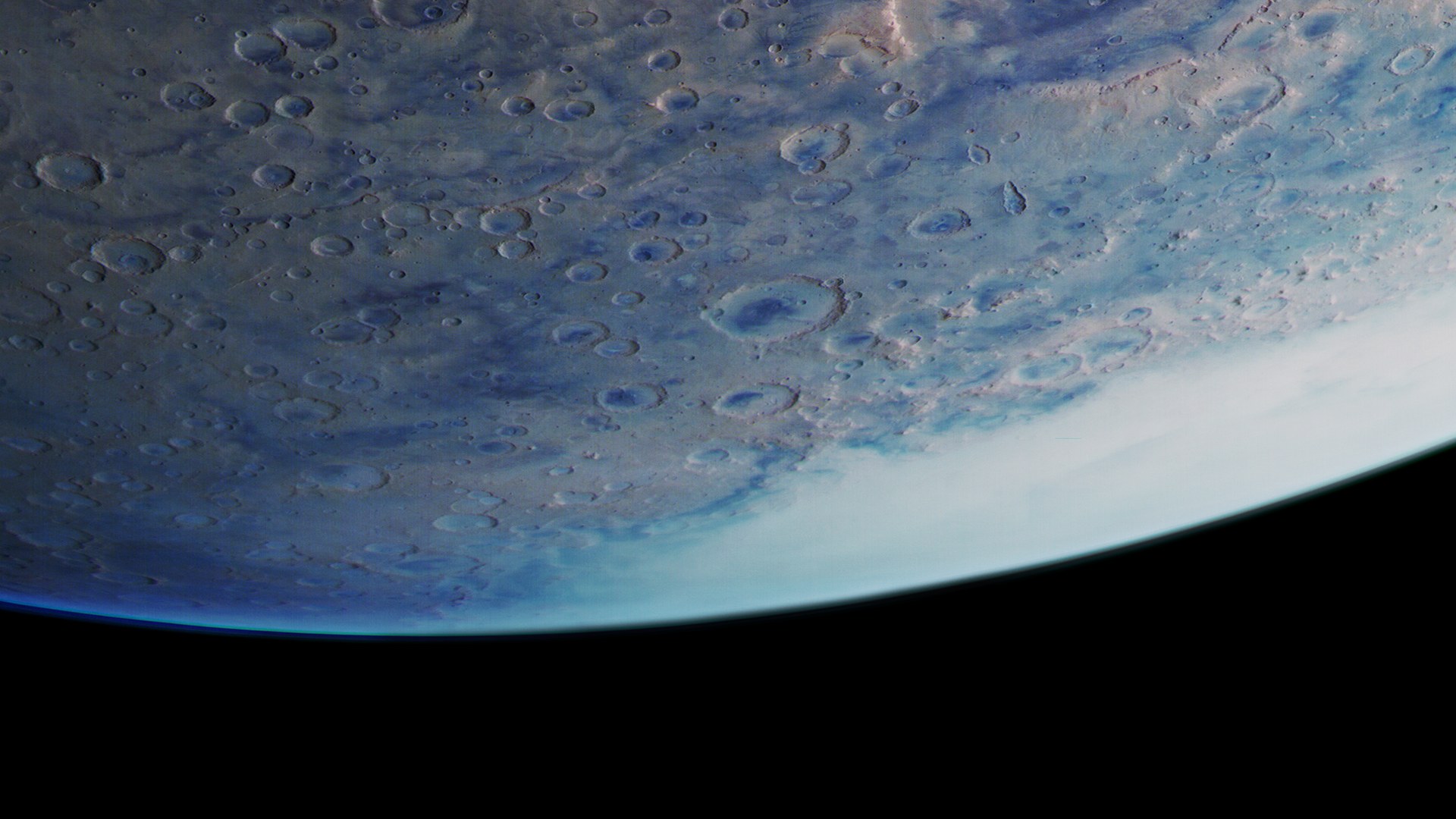The Hellas Planitia impact basin, covered by clouds
The Hellas Planitia impact basin, covered by clouds
Measuring 2200 by 1600 kilometres, Hellas Planitia is the largest impact structure on Mars and the second largest impact basin in the Solar System, exceeded in size only by the Aitken Basin near the southern pole of the Moon. With its centre at 70 degrees east and 30 degrees south, Hellas Planitia is the most distinctive structure in the southern Martian highlands. As the Hellas Plain lies nine kilometres lower than the crater rim, looking over it towards the opposite side would be a spectacular sight, especially as the horizon would appear rounded due to the planet’s curvature. These topographical extremes also result in remarkable atmospheric phenomena. In this image, acquired by the HRSC camera system, Hellas Planitia is covered by a thick layer of cloud that does not permit a view inside the basin. Such weather conditions can also play tricks on the DLR team in charge of planning the acquisition of HRSC images. Often, aerosols, haze and even clouds prevent high-quality images from being acquired, so repeated attempts at obtaining higher-resolution images have had to be made when Mars Express flies over Hellas Planitia.

